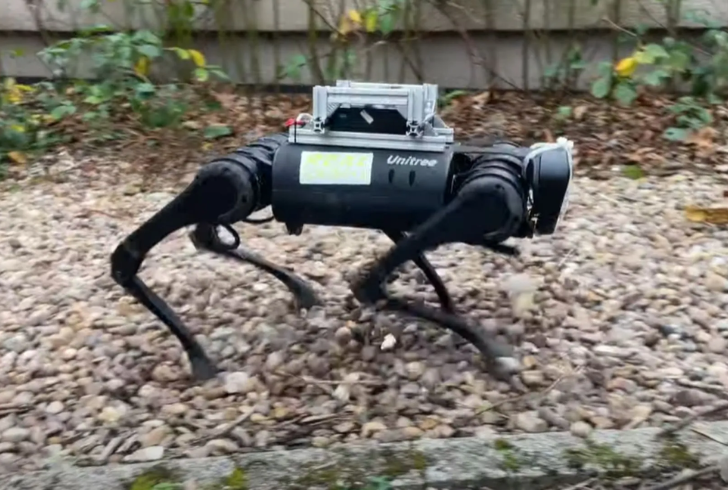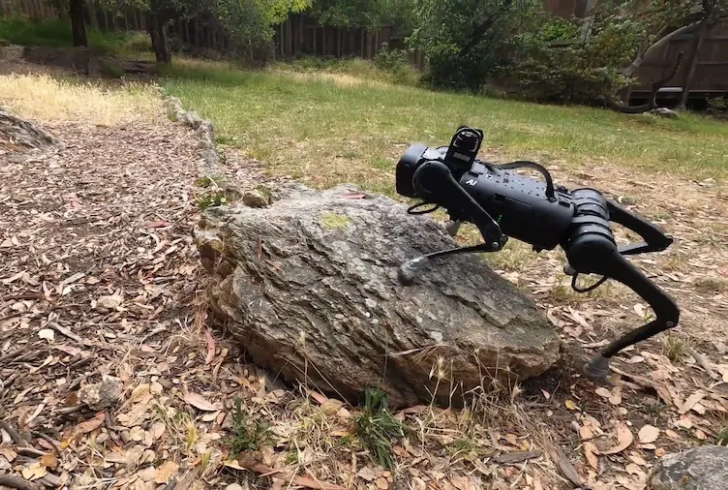A four-legged robot now walks like a living, breathing creature—no rehearsals, no manual tweaks. Researchers at the University of Leeds designed it to move, react, and adapt entirely on its own. Instead of modeling it after machines, they drew inspiration from nature. Dogs, cats, and horses became the foundation, offering their instinctive ability to shift stride and stay balanced.
This goes beyond basic movement. The robot responds to rough, unpredictable terrain without waiting for human direction. That kind of independent adjustment still doesn’t exist in most robots.
To make this happen, the team built an AI-powered system based on deep reinforcement learning. They trained the robot—nicknamed “Clarence”—entirely in virtual simulations. They didn’t take it outdoors or tweak it mid-training. Still, Clarence figured out how to choose between trotting, bounding, or running depending on the terrain. Even more impressive, it learned these moves in just nine hours.

Instagram | @interestingengineering | Robot dog moves with natural animal instincts as it adjusts stride on the go.
This AI model mimics how animals naturally adjust to their surroundings. The robot doesn’t follow rigid programming. Instead, it remembers what worked, shifts its gait to conserve energy, avoids slipping, and recovers when hit. In one test, researchers struck its legs with a sweeping brush while it walked across tree roots and loose wood. Clarence stumbled but quickly rebalanced—just like a real dog.
Joseph Humphreys, one of the lead researchers, pointed out how this behavior plays a big role in practical use. These robots could one day handle dangerous environments where people can’t go—search-and-rescue missions, nuclear cleanups, or rocky terrain on other planets.
The team focused on biomimicry, drawing directly from nature’s design. By imitating how real animals move and adapt, the robot performs with far more flexibility than traditional robots. That natural movement lets it handle unfamiliar or chaotic environments much better.
They tested Clarence in multiple terrain types—uneven rocks, tangled roots, woodchips, and loose timber. It walked through each area by switching gaits instinctively, without any manual instructions. The only outside control came from either a simple programmed route or a joystick like those in video games.

Image by Carnegie Mellon University | Robot dog learns from nature and adapts step by step through wild terrain.
This concept isn’t limited to Clarence. The researchers designed the framework to support any four-legged robot with a similar body shape. That means developers can apply the same method to different sizes and types of robots, from agricultural tools to emergency response machines.
Beyond just physical performance, this approach gives robots a kind of reflex. It lets them react to what’s in front of them in real time—not after someone tells them what to do. That’s a significant step toward building machines that feel less mechanical and more in tune with their surroundings.
A robot that learns how to walk like an animal on its own pushes robotic behavior into a new space. It doesn’t just move better—it makes decisions mid-step. That shift could change how we think about autonomy in machines and how they fit into real-world environments.
